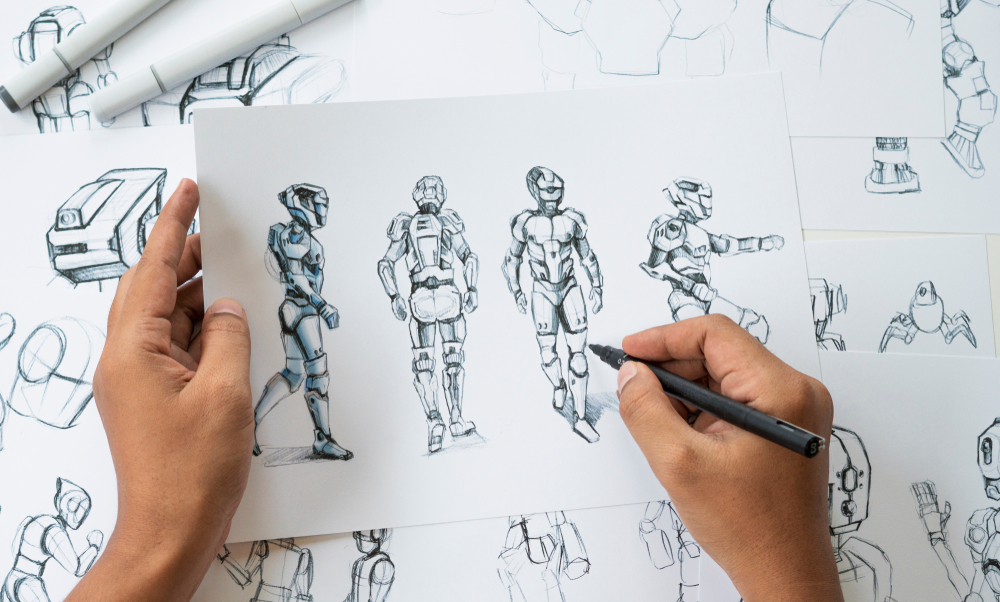We all have favorite characters. They might just so happen to be animated. That doesn’t mean they are any less ‘real’ to us just because they are not ‘live-action.’
This includes video game characters with whom we connect deeply, who make us feel a wide range of emotions toward them, from love to hate, and make the game worth playing even if only to spend more time interacting with the character.
And so we know that animation is a beautiful medium to convey captivating stories with amazing characters, often brought to life by talented game development studios.
Kratos from God of War, Joel and Ellie from The Last of Us, Arthur Morgan from Red Dead Redemption 2, and Lara Croft from Tomb Raider are a few examples of popular, fan-favorite video game characters.
These games are considerably successful as well.
The God of War series has sold over 19.5 million copies on PlayStation 4 alone. The Last of Us Remastered has sold over 20 million copies, while The Last of Us Part II has sold over 10 million copies. Red Dead Redemption 2 has shipped over 61 million units to date, making it one of the best-selling games of all time. Tomb Raider, with its far reaching legacy, has sold over 81 million units worldwide since its inception in 1996.
People yearn for character driven stories in their video games and these numbers are proof of that.
This is possible because of HOW they are animated. The way developers and animators breathe life into them and give them a unique personality, complex motivations, great development, and amazing storylines.
This article will showcase the significance of game animation to the gameplay and the elements that make it a reality. We will see why animation in games stands out so much more as a storytelling device as compared to animated stories that we watch passively (which are amazing in their own right).
The Art of Character Animation
Character animation is a combination of technical expertise with artistic expression. It births characters that are relatable, compelling, and unforgettable. Critical elements like narrative arcs, character development, and emotional beats are perfectly conveyed without speaking a single word.
Animators study varied fields like study anatomy, kinetics, and physics, which translates to physical movements that feel authentic and natural.
But it is not just the mobility that makes us love video game animation. It is through every gesture, expression, and stance that we are shown the inner thoughts, motivations, and feelings of our beloved characters.
Expressive Character Animation
Emotions bond us to the characters and it is all a part of the game animation process. It makes us watch the characters go through the highs and lows of human experience.
Animation develops empathy for the character and builds a connection with the audience. It elicits laughter, tears, and everything in between. The subtle quiver of a lip, the sparkle in the eyes, or the slump of the shoulders makes us feel that the character is a kindred spirit, even if you know it’s a collection of moving pixels.
This emotional engagement showcases the true power animations can hold over us.
Interactive Animation
This is where the magic of video games comes into play. The characters you love so much? Your relationship with them is far more dynamic that it would be with a character from a movie or television series.
With games, you, the player, are an active participant in the lives of video game characters. You control their fates after all.
As you click, tap, drag, or choose a dialog option, you direct the story. This is the perfect role for engagement and gives you agency and control over the narrative. You influence what your and others’ characters do, which creates a deeper bond between character and player.
The possibilities for exploration are endless, especially with new technologies like virtual reality (VR) pushing the boundaries of creator-user collaboration.
This is evident across all kinds of genres, from fantasy and science fiction to dramas and slice-of-life stories.
The Future of Character Animation
The future holds great possibilities for video game character animation. With technologies like AI (artificial intelligence) and ML (machine learning), the process will become more efficient. They will streamline workflows, automate repetitive tasks, and even generate lifelike movements and expressions with minimal human intervention, leaving developers to prioritize creativity and innovation.
Furthermore, VR (virtual reality) and AR (augmented reality) are set to revolutionize the animation world with truly immersive experiences. We are all excited to see and experience it!
Conclusion
Video game narratives fueled by excellent animation for complex characters are all part of a system that delivers immersive and emotionally engaging gameplay.
Employing this system well can be a challenge, as there are several parts to juggle. EDIIIE is a pioneering game development and design studio, with expertise in 3D animation services that can make this easier for you.
We can help you create 2D or 3D character animations with cutting edge technology and years of expertise. Just reach out.



